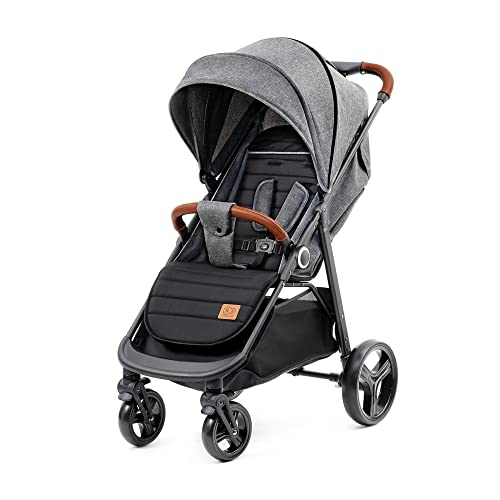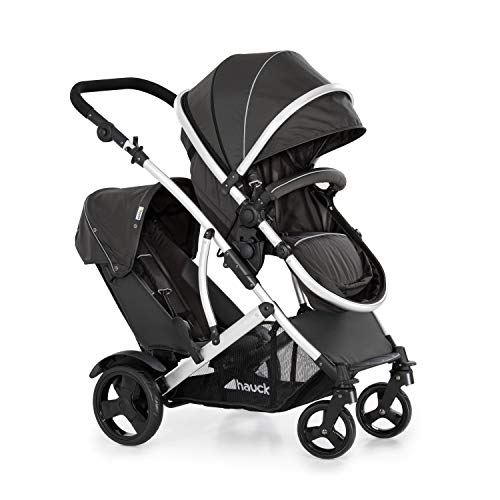Is Your Company Responsible For An Pushchairs From Birth Budget? Twelv…
페이지 정보
작성자 Eloise 작성일24-07-09 09:41 조회48회 댓글0건관련링크
본문
 Choosing Pushchairs For Your Baby
Choosing Pushchairs For Your BabyA stroller, pushchair or buggy is a type of transportation for infants and toddlers. Infants must be able to lie flat, which is the reason strollers are equipped with the bassinet or carry cot and some come with a frame that you can attach the cot to.
Once your baby is able to sit and has a good head control when sitting up, you can put them in a stroller with seats that face away from or towards you. Some have useful features like the swivel wheels and enclosed carrycots, which can be utilized in 3-in-1 systems.
Rear-facing
There are a lot of choices to consider when you are deciding on a pushchair for a new baby. This includes prams, buggies, pushchairs from birth and strollers. Although the terms may seem similar, there are important distinctions. A pram is usually designed to lie flat, while a pushchair allows an upright position. Some babies can use both, whereas others will need a carrycot to strengthen their necks and heads to sit comfortably.
The majority of experts agree that it is ideal to use an infant pushchair with the parent facing forward for babies until a few months old. Babies love looking at their parents' faces and love the connection that can be created. Eye contact is essential for their emotional development as they begin to process stimuli around themselves. As they observe their parents' interactions with each other they also begin to develop the ability to communicate.
When babies are able to see their parents, they feel more secure and confident. They know they can count on their parents to safeguard their children and assist them in navigating their environment. This early trust can contribute to the child's overall confidence and well-being as they develop into toddlers and begin to explore the world on their own.
A parent-facing Pushchair Makes allows you to monitor your child while they are in their seat. You can quickly check if your baby is comfortable and content. Additionally, you can ensure that their hat isn't over their eyes and the wind isn't blowing on their face. Babies who can see their parents' faces are more likely to fall asleep as they are comforted by their familiar faces.
If you want to keep your baby in a pushchair that is geared towards parents for as long as you can there are plenty of options available. Some pushchairs are able to be switched between parent-facing or forward-facing, and some have an extendable footmuff to keep out cold air or a raincover to shield your child from the elements. The Eezy S Twist+2 is a great model of a flexible pushchair that can switch from a parent-facing unit to an forward-facing unit with the flick of a lever. It can also be paired with an Cocoon S car seat, Cot S or carrycot to make the 4-in-1 Travel System.
Forward-facing
A pushchair that is forward-facing allows babies to explore their surroundings and enjoy the sights, smells and sounds around them. The baby can also see his parents, which is essential for social development. About six months old, based on their development milestones and ages the majority of babies are able to move from a baby carrycot or pram to a pushchair that faces towards the forward. This is the time when they have developed enough head and neck control to be safe in forward-facing positions.
Research shows that when babies face their parents from the front of a pushchair they are more likely to speak back and have a reduced heart rate which suggests that they feel less stressed. They also are more interested in what's going on around them and their parents, which can help stimulate their minds and develop their language skills. Parents are more likely to talk to their baby if they can make eye-contact with them. This is soothing and comforting for them.
There are numerous advantages having a pushchair that faces the front from the moment of birth, such as being capable of using it for longer walks. They will be able to take your child shopping and for other activities that require walking. A stroller or pushchair will also let your child enjoy the same activities as their older siblings, which will help build their confidence and self-esteem.
Choose a pushchair that has various accessories like an armband, a footmuff and pram blanket. A hood and a parasol are vital to shield your baby from the sun, particularly during hot temperatures. Choose a parasol which has an SPF or UV 50+ rating, and make sure it's designed to fit your pushchair and is easy to attach. Some brands provide a variety of accessories. Some come in a set with the pushchair, while others can be purchased separately.
Many pushchairs are able to convert into double-sized by adding an additional seat unit or carrycot which is particularly beneficial push chair for sale families expecting a second child soon after the first. Some models include everything you need for the conversion, while other models come with a separate converter kit.
All-terrain
If you live on a country road, enjoy walks in the woods, or spend much time hiking, you need a pushchair designed for rough terrain and muddy fields. All-terrain strollers are designed to be able to handle any terrain. They come with features like suspension that cushions bumpy rides, so your child isn't shook up. The seat is tilted to evenly disperse the force of the bumpy terrain over the head and neck of your child.
Most all-terrain pushchairs are three-wheelers and come with a front wheel that is able to swivel and lock into place to allow maximum maneuverability, which is crucial when you're on rough terrain. They'll also typically have bigger tires than your typical pushchair, which means that they can handle more rough terrain and provide a more comfortable ride for your child.
Another thing to consider when choosing an all-terrain pushchair is if the wheels are air-filled or foam-filled. Air-filled tyres provide a smoother ride over rough ground however, they also puncture more easily if you hit something sharp. Foam-filled tyres last longer and less likely to puncture, so they are a better choice for a pushchair with all-terrain capabilities.
Many all-terrain pushchairs also convert from single to double mode to accommodate a growing family and some can be used as a travel system using car seat adaptors, which makes them ideal options for parents with young children. Some models, like the Out 'n' About Nipper are suitable for newborns due to their flat seats and the fact that you can attach a carrycot (although it isn't suitable for sleeping at night).
The Nipper also comes with a range of accessories for pushchairs that include a raincover as well as the footmuff. It's easy to store since it folds compactly with one hand, and it stands on its own when folded. It comes with an adjustable lockable wheel that can rotate 360 degrees and tyres with foam-filled, never-flat tires.
Weight
The choice of the best pushchair is a crucial choice that will impact the how you travel with your baby. The best model will allow your child to develop and grow in comfort while ensuring that you take advantage of all the family adventures to be. It's a significant investment, so be sure to check that you choose the one that is suitable for your lifestyle and budget.
The first step is understanding the distinction between a pushchair, pram and buggy, as well as the differences between a traveling system and a single pushchair. This guide will help parents comprehend the terminology and determine what is right for their new baby.
A pram, as its name suggests, is made for babies and newborns between six and six months old. It allows your baby's back to grow properly, by allowing them sleep flat. Some models also have an attachment for a bassinet, which can be used during the first few months, giving your baby a secure and comfortable environment.
However, you should be aware that not all pushchairs that say they can lie flat actually do so. Be wary of manufacturers who claim that their pushchair can recline completely flat. Always read the fine print to determine what it really means. Some pushchairs can only offer the slightest amount of recline, which is more than a seat that is fully reclined.
When your baby is old enough to sit up without assistance, it's time to transition them into a pushchair seat. This usually happens at three to four months. However, some babies will start sitting up earlier. It is recommended to purchase a pushchair that can adapt from a carrycot to a seat to give you the flexibility you need and ensure your baby's safety until they are ready for the next stage.
Parents would prefer a lightweight pushchair with just one pedal for brakes, especially when they want to talk or carry shopping bags in their hands. Our MFM home test Jessica gave this pushchair a thumbs up and said "it handles superbly with a wonderful, smooth ride, and the one-handed fold is an absolute delight". The lightweight model is equipped with Tru-Ride tyres, which are durable puncture-resistant, and offer high performance.

댓글목록
등록된 댓글이 없습니다.




